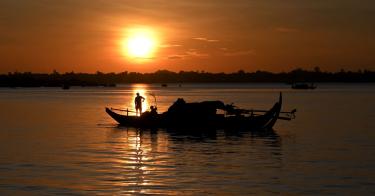The Indo-Pacific has become an increasingly more dynamic and critical part of the world’s foreign policy chess board.
It’s home to at least five of the world’s trillion-dollar economies and hosts more than half of the world’s population in just two of its countries, India and China.
Pre-pandemic, the Indo-Pacific was boasting an average economic growth rate among its countries of about 5%, the highest in the world. During the uncertainty of the past year, several of the countries of the Indo-Pacific were among the few in the world that posted positive growth rates.
All of that makes the region a hugely important economic area for the United States.
However, in terms of economic governance and freedom, the region is notably divided. The Indo-Pacific region is home to three of the world’s five fully free economies (Singapore, New Zealand, and Australia), according to The Heritage Foundation’s latest Index of Economic Freedom.
At the same time, however, half of the region ranks in the “mostly unfree” and “repressed” categories.
While some progress has been made toward improving trade and cooperation in recent years, the region still has a long way to go.
As the Biden administration’s coordinator for the Indo-Pacific, Kurt Campbell, begins “quietly exploring” trade opportunities in Asia, the United States should take this opportunity to promote more economic freedom in the region.
First and foremost, it’s in America’s interest to advance its partnerships with existing like-minded, willing allies and those nations with high degrees of economic freedom in the region.
In the Indo-Pacific, as is true throughout the rest of the world, there’s a strong correlation between economic freedom and prosperity. The countries identified as the “most free” have an average gross domestic product that is 11 times greater than those in the “most repressed” category.
As a whole, the Indo-Pacific region ranks far below the world average in terms of market openness, especially in investment and financial freedom. That creates a lot of uncertainty in these countries’ business climates and poses a significant challenge for both foreign and domestic investors in the region.
Free market reforms that reduce restrictions on investments and financial services would introduce opportunities for even greater growth in the Indo-Pacific’s developing nations.
In particular, countries in the Mekong River Valley—Cambodia, Laos, Myanmar, Thailand, and Vietnam—merit elevated, more focused attention from Washington.
As a strategic outpost, that region was a significant source of Chinese trade investment and development assistance through Beijing’s Belt and Road Initiative. In 2019, China broke ground on an expansion of its China-Indochina Peninsula Economic Corridor with a new $6 billion high-speed railway connecting the southern province of Yunnan, China, to the Laotian capital, Vientiane, and even further down to Singapore.
Still, for countries concerned about China’s rising regional dominance and its “corrosive capital,” the United States can offer a safer, market-based alternative development model.
In July 2020, Singaporean Prime Minister Lee Hsien Loong published an article in Foreign Affairs detailing the concerns of the middle powers in Southeast Asia trapped in a perceived conflict between the United States and China.
As the United States continues to craft its foreign policy in the Indo-Pacific, it must develop a grand strategy centered on the principles of economic freedom.
By pursuing reforms based on the universal principles of economic freedom, the United States can engage the Indo-Pacific not by the coercive nature of its economic power, but by the tried-and-true success of its values and continue to build up a rules-based international order.
This piece originally appeared in The Daily Signal




